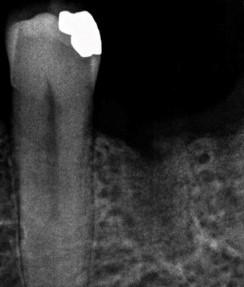What is tooth decay?

Tooth decay it is enamel demineralisation.
Bacteria living in the mouth cause demineralisation.
When carbohydrates (glucose and sucrose) are consumed, it interacts with the bacteria in the plaque to produce acid, which partially or completely destroys the enamel.
Bacterial plaque, also called biofilm or dental plaque is the result of oral bacterial build-up that coats the teeth surface, which is the main cause of tooth decay.
What are the symptoms?
Tooth decay changes tooth colour, similar to a white stain. This white stain indicates tooth demineralisation. A noticeable hole can also be observed. Later, lesions and dark stains might appear.
What is enamel?
Enamel consists of minerals, water, and organic material. It is the protective outer coating of the tooth and is about as hard as a diamond.
How does tooth decay begin?
Tooth decay is mostly the destruction of the coating of the tooth. Demineralisation of enamel is a continuous and daily process. Its remineralisation is also a daily and continuous process that happens through the saliva process. In addition, food can get stuck in the pits and grooves, which over time, will cause tooth decay.
What are some common risk factors for tooth decay?
- Poor oral hygiene;
- Poor natural tooth resistance;
- Mineral deficiency, particularly fluoride.
What can I do to prevent ?
The best way to prevent dental decay is by brushing your teeth at least two times a day with a toothpaste containing fluoride. Dental flossing is also extremely important before brushing your teeth. Besides these, regular appointments and following your dentist’s advice will contribute to improved oral health.
Why is fluoride so important in preventing tooth decay?
Fluoride is a chemical element that exists in water. It can also be found in some foods, such as fruit, vegetables, and dairy products. Fluoride protects tooth enamel, by preventing demineralisation and making it more resistant to sugar.
Initial Stage
There is only slight damage to the tooth enamel. There is no pain, but the dentist will be able to notice the problem.
Advanced Stage
There is a deep cavity with damage to the enamel and dentine, resulting in a hole in the tooth. At this stage, you might feel pain while eating hot or cold foods. In an advanced state, there will be damage to the vessels and nerves, and destruction of the tooth pulp, resulting in toothaches that, if left untreated, can transform into a granuloma and, subsequently, a cyst.
Tooth Decay Prevention
Tooth decay can only be slowed down. Therefore, prevention is the best to way to avoid cavities.
- Avoid sugary foods;
- Invest in good oral hygiene;
- Use an appropriate toothpaste, toothbrush, and brushing technique recommended by your dentist.
How can be treated?
Tooth decay is much easier to treat in its early stages before there is any pain involved. If immediately treated, anaesthesia will not be necessary.
- The cavity can be removed using a scaler—a sort of small spoon. A scaling is carried out to remove affected fragments. It is a procedure used in its early stages without anaesthesia;
- A gel can also be used for small or early stage cavities to dissolve and destroy them. This procedure is used in sensitive adults and children;
- Advanced cavities will need instruments like drills. By using these instruments, it will be possible to cut, diminish, and give shape;
- Recently, our dentists have been using laser gingivectomy to avoid pain, bleeding, and anaesthesia. It is used as an anti-inflammatory, and also for treatment.
Vita Center Medical Reference- Reviewed by VitaCentre Dental Clinic Staff on May 23, 2022

